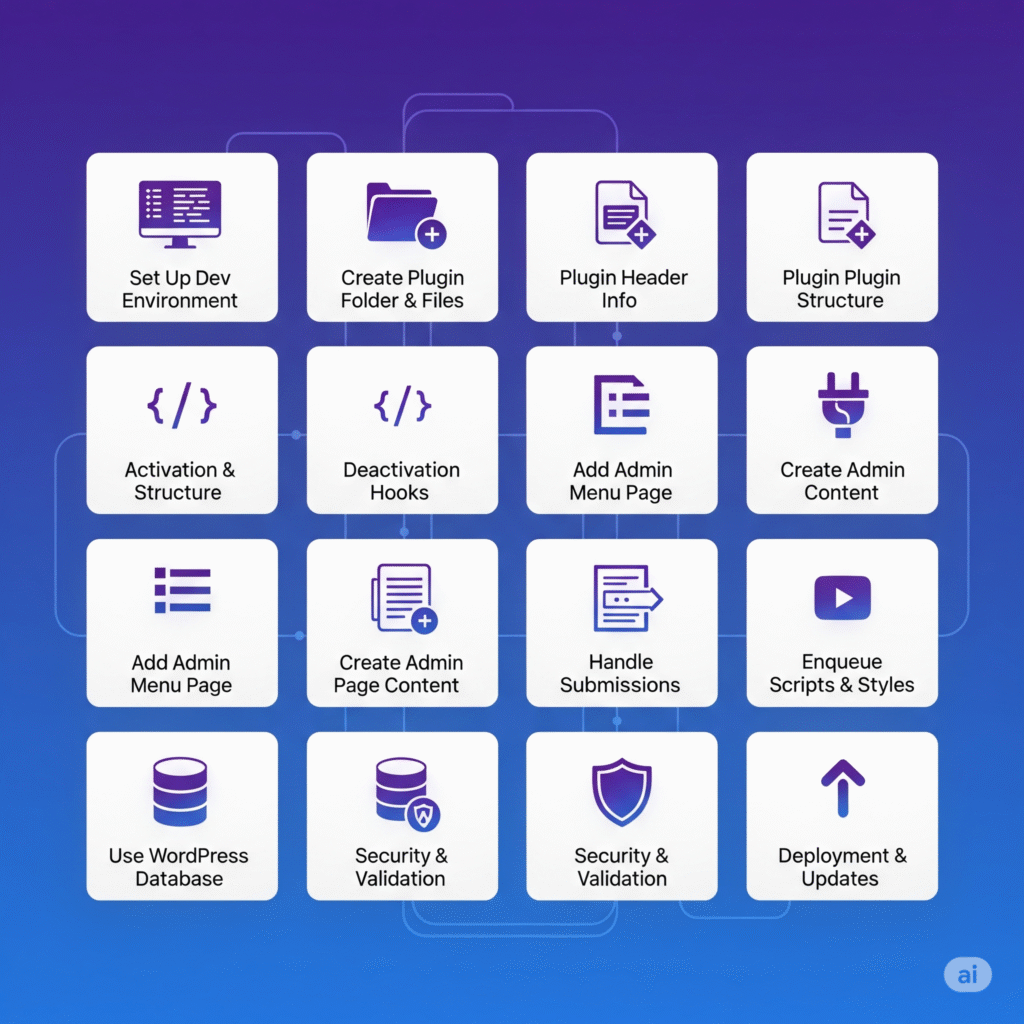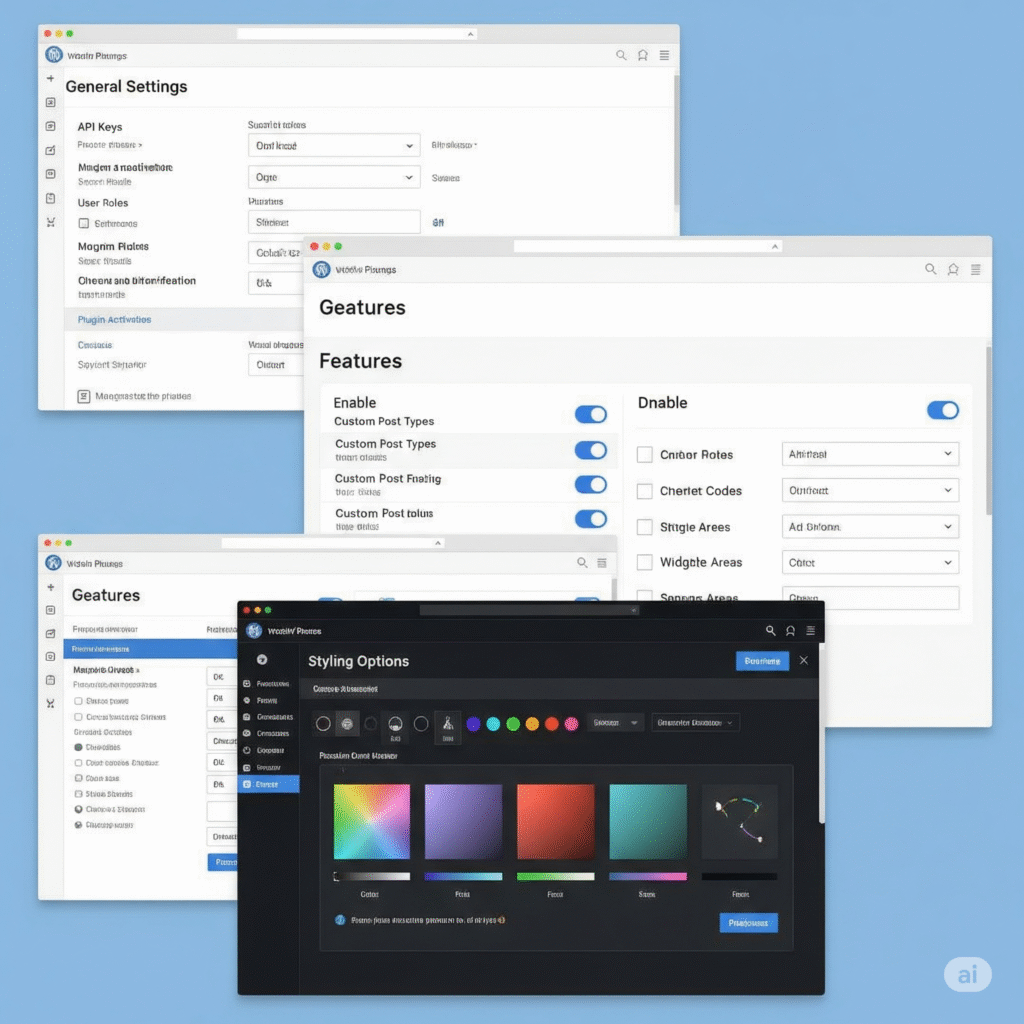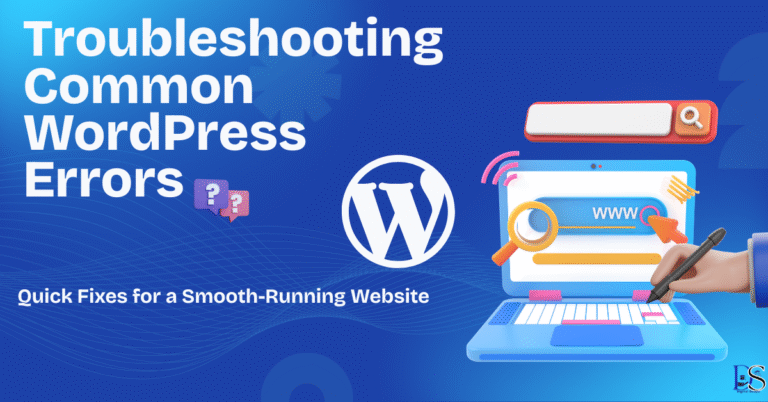WordPress Plugin Creation: The Complete Beginner’s Guide
If you’ve ever found yourself frustrated by limitations in existing WordPress features or plugins, you’re not alone. That’s exactly why WordPress plugin creation is such an essential skill to learn.
A WordPress plugin is a small software application that extends the functionality of a WordPress website. Think of plugins as apps for your website—they let you add features like SEO tools, contact forms, sliders, and much more.
The best part? You don’t have to be a coding expert to build one. With a basic understanding of PHP and WordPress hooks, you can create your very own plugin to suit your needs—or even sell it to others.
In This Article
WordPress Plugin Creation Tools: What You Need to Get Started
Before diving into development, make sure you’re equipped with the right tools. Here’s what you’ll need:
- A local development environment such as LocalWP or XAMPP
- A good code editor like Visual Studio Code or Sublime Text
- Access to your WordPress installation
- A basic understanding of PHP
- Familiarity with WordPress hooks
These tools provide a safe space to experiment and build without risking your live website.
WordPress Plugin Creation Step-by-Step: How to Create a WordPress Plugin from Scratch
Step 1: Set Up Your Plugin Folder
Navigate to wp-content/plugins/ and create a new folder. Name it something like my-first-plugin.
Inside this folder, create a PHP file:
perlCopyEditmy-first-plugin.php
Step 2: Define the Plugin Header
The plugin header is a block of comment lines that defines your plugin:
phpCopyEdit<?php
/*
Plugin Name: My First Plugin
Plugin URI: https://example.com/my-first-plugin
Description: A basic plugin to display a custom message.
Version: 1.0
Author: Your Name
Author URI: https://example.com
*/
This information will be displayed in the WordPress admin panel under the Plugins section.
Step 3: Add Simple Functionality
Let’s add a basic message to the website footer:
phpCopyEditfunction my_footer_message() {
echo "<p style='text-align:center;'>Thanks for visiting!</p>";
}
add_action('wp_footer', 'my_footer_message');
Now go to your site and activate the plugin. You’ll see the message at the bottom of every page.

WordPress Plugin Hooks and PHP Functions: Building the Plugin’s Core
WordPress hooks are how your plugin interacts with the rest of WordPress. They come in two types:
- Action hooks allow your plugin to do something at a specific point.
- Filter hooks allow you to modify data before it’s displayed or saved.
For example, to change the post title dynamically:
phpCopyEditfunction modify_post_title($title) {
return $title . ' - Custom Tag';
}
add_filter('the_title', 'modify_post_title');
Also, get comfortable using common PHP functions within your plugin logic. PHP powers the server-side behavior of WordPress, so understanding how to write functions and handle variables is critical.
Custom WordPress Plugins: How to Add Advanced Features and Settings Pages
Once your plugin does something useful, you can expand it with custom features like:
Adding CSS or JavaScript
To include a stylesheet:
phpCopyEditfunction my_plugin_styles() {
wp_enqueue_style('my-plugin-style', plugin_dir_url(__FILE__) . 'style.css');
}
add_action('wp_enqueue_scripts', 'my_plugin_styles');
Creating a Plugin Settings Page
To make your plugin user-configurable, add a settings page in the WordPress dashboard using the Settings API:
phpCopyEditadd_action('admin_menu', 'my_plugin_menu');
function my_plugin_menu() {
add_options_page(
'My Plugin Settings',
'My Plugin',
'manage_options',
'my-plugin',
'my_plugin_settings_page'
);
}

Secure WordPress Plugins: Best Practices for Safe Coding
Security is critical in plugin development. Poorly coded plugins can make websites vulnerable.
Best Practices:
- Sanitize and validate all user inputs using functions like
sanitize_text_field()andesc_html(). - Use
noncefields for form security. - Avoid using unsanitized data in database queries.
- Escape outputs to prevent XSS (Cross-Site Scripting) attacks.
WordPress Plugin Testing: Debugging and Ensuring Compatibility
Before launching your plugin publicly, it must be thoroughly tested.
Testing Tools:
- Enable debugging in
wp-config.phpusing: phpCopyEditdefine('WP_DEBUG', true); - Use the Query Monitor plugin to detect performance bottlenecks.
- Test on various browsers and screen sizes.
- Check compatibility with latest versions of WordPress and PHP.
WordPress Plugin Monetization: How to Sell and Market Your Custom Plugin
Many developers turn their plugins into commercial products.
Steps to Monetize:
- Package the plugin in a
.zipfile. - Create a landing page with plugin features and screenshots.
- Use Easy Digital Downloads or WooCommerce to sell.
- Provide regular updates and support.
- Promote through content marketing, forums, and social media.
You can even submit your plugin to CodeCanyon or offer a freemium version on the WordPress Plugin Repository.
Anecdote: From Idea to Income
Mark, a freelancer, built a custom pricing table plugin for one client. After noticing similar requests, he decided to polish the code and turn it into a product.
With some marketing and a landing page, he launched the plugin. Within 9 months, it had earned him over $7,500—completely passively.
WordPress plugin creation isn’t just about functionality—it can also be a legitimate business.
WordPress Plugin Development Tips: Common Mistakes to Avoid
Even experienced developers make avoidable mistakes. Watch out for these:
- Hardcoding file paths – Use dynamic functions like
plugin_dir_url(__FILE__). - Not localizing text – Use WordPress translation functions for i18n support.
- Lack of documentation – Comment your code and include a README file.
- Ignoring plugin updates – Maintain compatibility with the latest WordPress versions.
WordPress Plugin Tutorial Resources: Where to Learn More
Continue your learning with these high-quality resources:
- WordPress Plugin Developer Handbook
- WPBeginner Plugin Guide
- DreamHost Plugin Tutorial
- PHP for Beginners
- WordPress Code Reference
Final Thoughts on WordPress Plugin Creation
WordPress plugin creation is a skill that not only empowers your site but can also open up professional and financial opportunities.
Start with a simple idea. Build one function. Then add more. With practice, you’ll go from a novice to a confident developer, capable of building useful tools for yourself or clients.
Whether you’re building for personal use or preparing a product for sale, learning to create WordPress plugins puts you in control of your digital environment.
FAQs on WordPress Plugin Creation
1. Is WordPress plugin creation hard for beginners?
Not at all. With basic knowledge of PHP and some tutorials, you can start building functional plugins in a matter of hours.
2. Can I sell my WordPress plugin?
Yes. You can sell directly from your website or through marketplaces like CodeCanyon.
3. What language is used in WordPress plugin development?
Primarily PHP, but HTML, CSS, and JavaScript are often used for interface and dynamic features.
4. How do I ensure my plugin is secure?
Sanitize inputs, validate data, and follow WordPress security guidelines.
5. Are there tools to help me debug plugins?
Yes. Use Query Monitor, WP_DEBUG, and logging to debug effectively.







